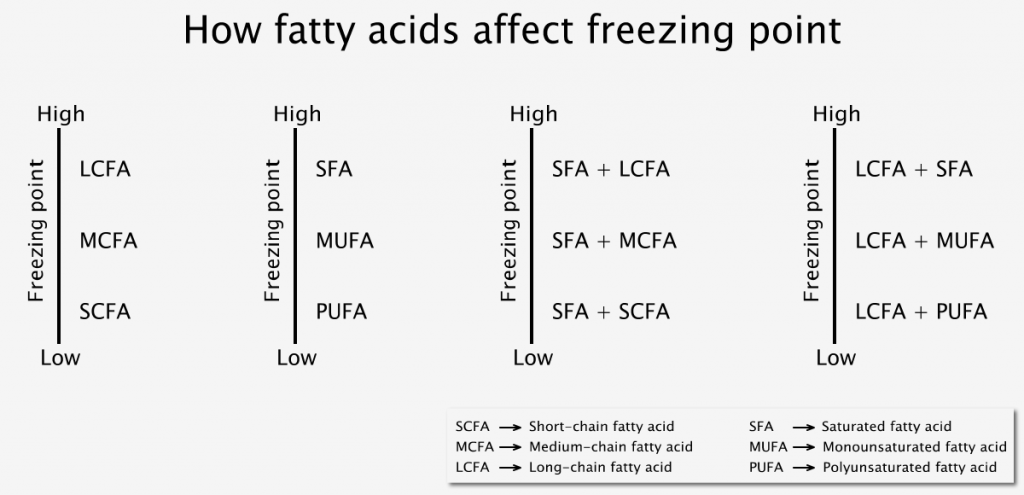Virgin coconut oil (VCO) is actually liquid, rather than solid. It's an oil after all. The reason why sometimes you see virgin coconut oil solid and sometimes liquid is due to the different ambient temperatures it is in.
If the ambient temperature falls below 76 °F (24.4 °C), which is somewhere around the comfortable room temperature for some regions, the originally liquid virgin coconut oil will start to solidify. This temperature point is the solidification temperature or freezing point of VCO.
When the solidification process begins at 76 °F (24.4 °C), you'll see the colorless liquid VCO start forming some white solid substances, which appear light and soft to our eyes.
As temperature drops further, the white substances will gather to form soft white chunks. This slowly turns the entire VCO into a semi-solid state before it marbles into a full solid form as temperature drops even lower.
The freezing process from liquid to solid for an entire jar of virgin coconut oil is usually a gradual one. Some people thought that VCO should turn solid as soon as it hits the solidification temperature. This is true if we look at it at a molecular level.
Imagine a jar of VCO is made up of zillions of oil molecules. If each and every oil molecule is simultaneously chilled at 76 °F (24.4 °C) or below, then yes, the entire jar of VCO will instantly solidify and become as hard as rock.
But in reality, it requires some time for ALL the oil molecules to cool and harden. Oil molecules that are in the middle of the jar are usually the last to solidify.
Why does virgin coconut oil start to solidify at around room temperature?
This has largely to do with its high saturated fat content. About 80 – 90% in virgin coconut oil are saturated fats. The more saturated fats it has, the higher will be its freezing point.
But fortunately, more than half of its saturated fats are the shorter medium-chain fatty acids (MCFAs). The shorter the chain length, the lower the freezing point.

LCFA includes SFA, MUFA and PUFA. For instance, myristic acid is a long-chain saturated fatty acid while oleic acid is a long-chain monounsaturated fatty acid and linoleic acid a long-chain polyunsaturated fatty acid.
This kind of helps to bring down the freezing point, which is good and easier for us to melt the virgin coconut oil down and use it for daily benefits.
If your virgin coconut oil has hardened and you need to use it, all you have to do is warm it till it reaches above 76 °F (24.4 °C). Isn't that the temperature that causes it to start turning from liquid to solid?
Melting point = freezing point, in the context of VCO. Which means, virgin coconut oil will start to turn from solid back to liquid at the same temperature point.
But again, it won't turn instantly to liquid unless all the VCO molecules are exposed to the same temperature at the same time.